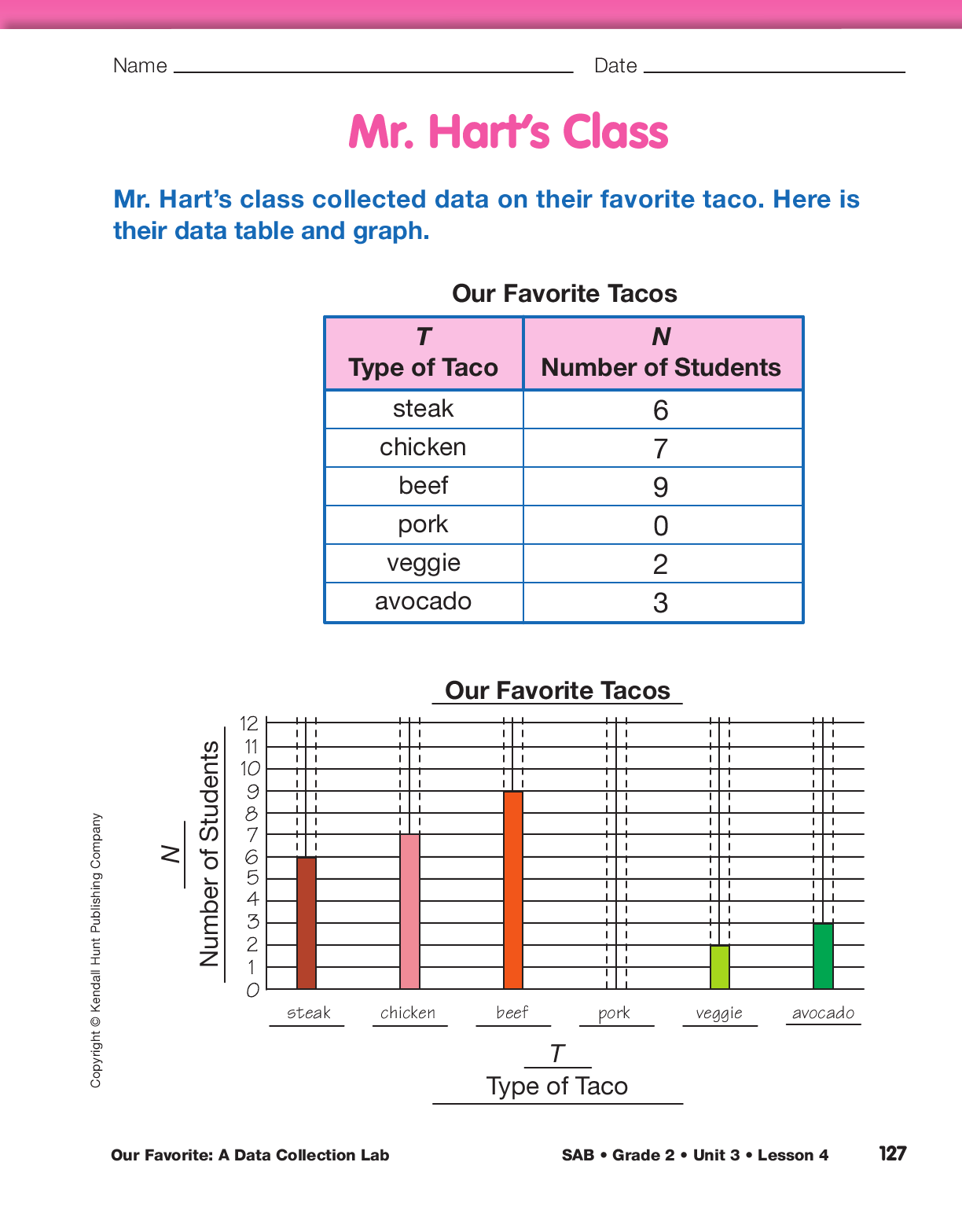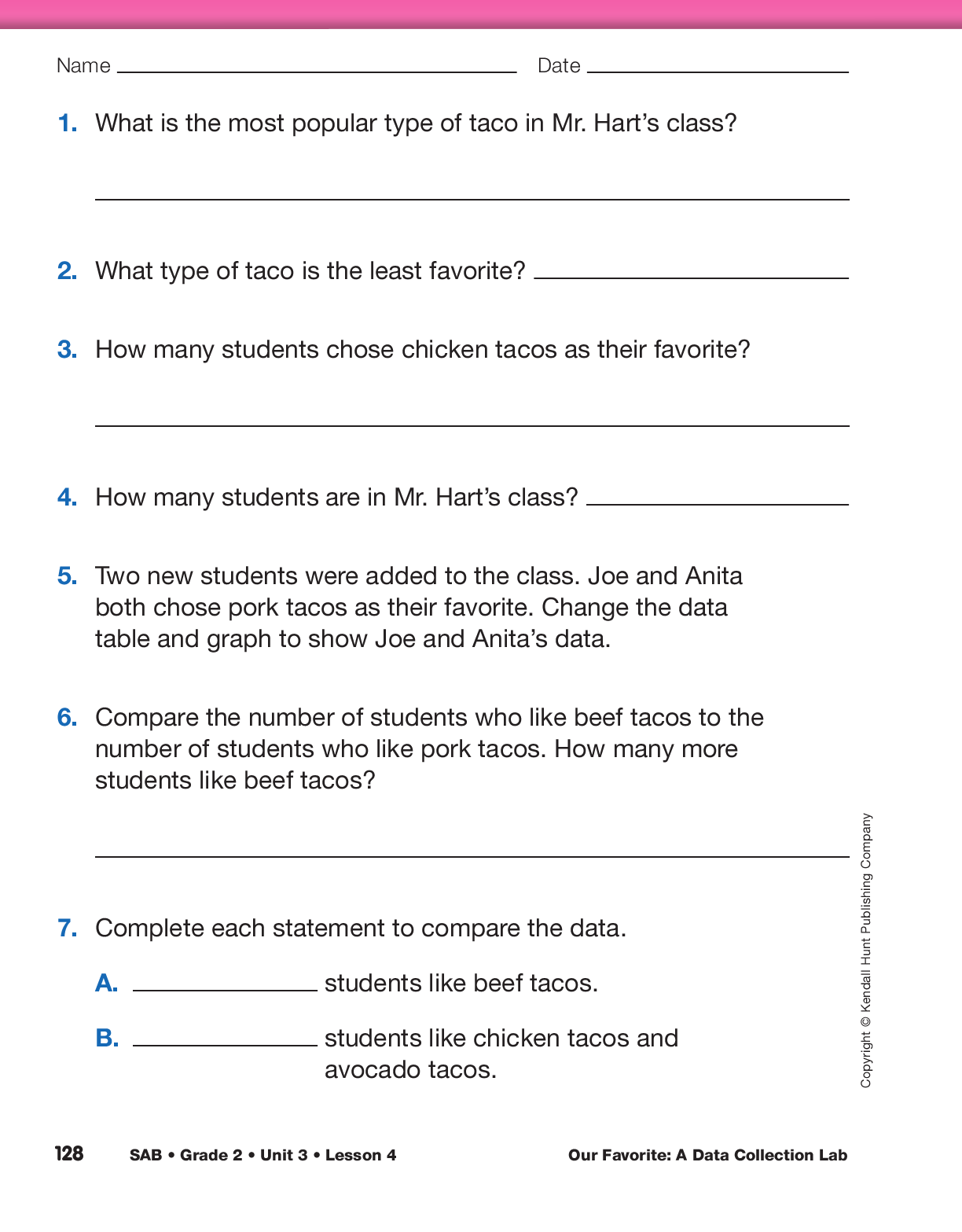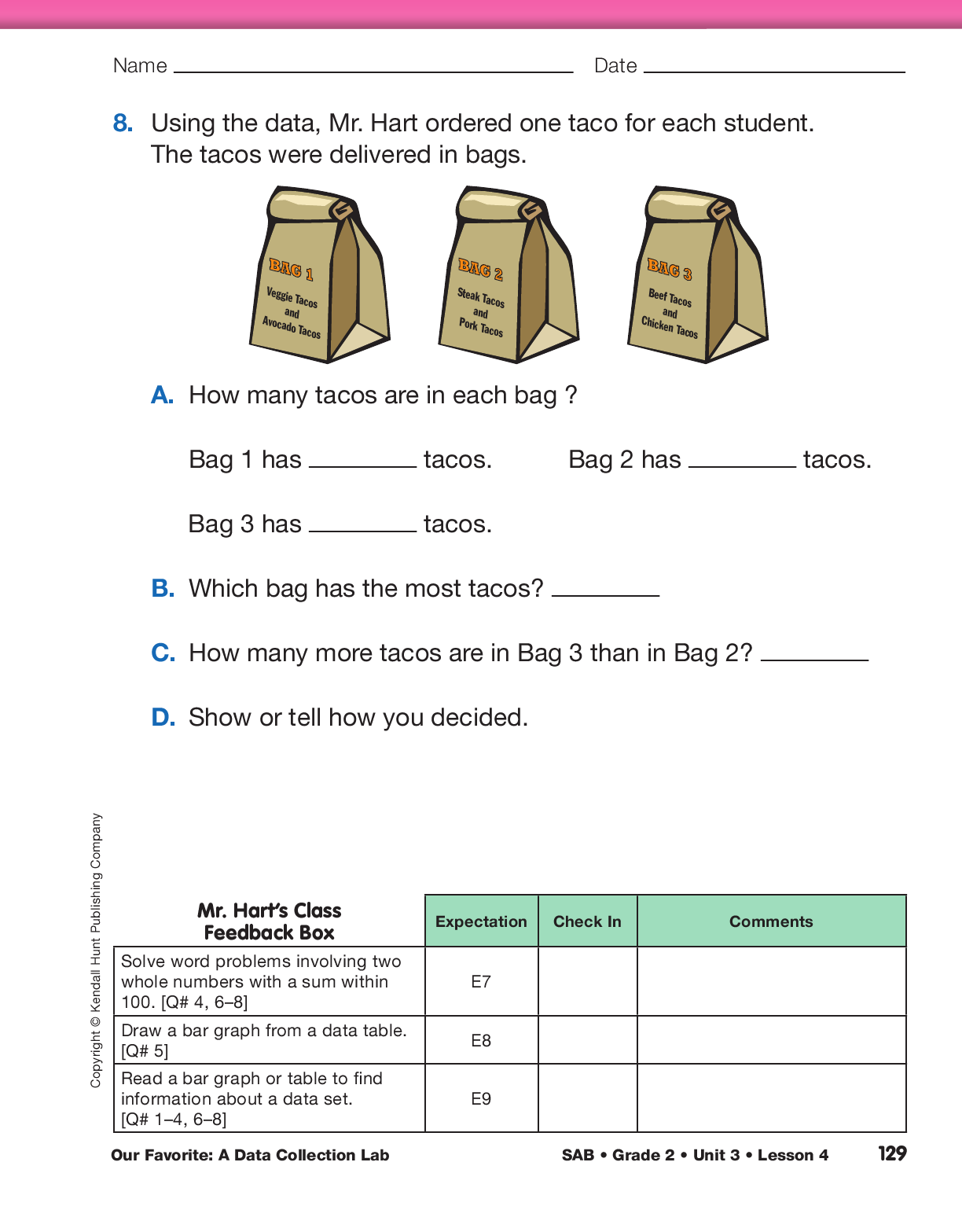Our Favorite: A Data Collection Lab
Est. Class Sessions: 2Summarizing the Lesson
Find Errors in Sample Data. To apply the concepts covered in this lesson, have students work in pairs to review the Mrs. Dawson's Class page in the Student Activity Book. Tell students to pretend they are teachers and ask them to look closely at the table and graph. Have partners discuss what they would tell the students in Mrs. Dawson's class about collecting, organizing, and graphing data. There are several errors between the table and the graph including:
- The label for the vertical axis should read “Number
of Students.” - The first fruit on the data table is “apple.” On the graph it
is “pear.” - The labels for “orange” and “banana” are in reversed order from data table to graph.
- The data table says 5 students chose orange as their favorite and 10 chose banana; the graph
shows
10 students chose orange and 5 chose banana. - The data table shows 7 students chose watermelon and the graph shows 9.
After student pairs have had time to review Mrs. Dawson’s class’s work, display the Mrs. Dawson’s Class page and have students show the errors or discrepancies on the display. See the Sample Dialog.
Analyze Mr. Hart’s Data. Direct students’ attention to the Mr. Hart’s Class pages in the Student Activity Book on which they interpret a data table and graph and answer questions about favorite tacos. Have students complete the Mr. Hart’s Class pages independently.


















